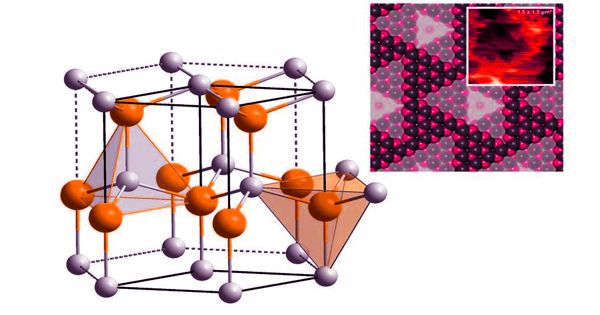Perfect catalysts materials for new energy
Looking for the perfect catalyst is not only about finding the right material, but also about its orientation. On the way to a CO2-neutral economy, we need to perfect a whole range of technologies – including the electrochemical extraction of hydrogen from water, fuel cells, or carbon capture. Depending on the direction in which a crystal is cut and which of its atoms it thus presents to the outside world on its surface, its behavior can change dramatically. All these technologies have one thing in common: they only work if suitable catalysts are used.
Looking for the perfect catalyst is not only about finding the right material, but also about its orientation. In many cases, these are catalysts with, particularly high efficiency. The stability of a catalyst and the availability and recyclability of the materials.
For many years, researchers have therefore been investigating which materials are best suited for this purpose. To mitigate world climate change, carbon recycling in a sustainable manner has been proposed, and artificial photosynthesis is one of the promising approaches. At TU Wien and the Comet Center for Electrochemistry and Surface Technology CEST in Wiener Neustadt, a unique combination of research methods is available for this kind of research.
Together scientists could now show: Looking for the perfect catalyst is not only about finding the right material, but also about its orientation. Replacement of part of the fossil fuel consumption by renewable energy, in particular in the chemical industry, is a central strategy for resource and energy efficiency.
Efficiency or stability
When the reaction is thermodynamically possible but too slow to be useful, then a catalyst is needed. A catalyst increases the rate by intervening in the chemical change to open up a new, quicker pathway for change. “For many important processes in electrochemistry, precious metals are often used as catalysts, such as iridium oxide or platinum particles,” says Prof. Markus Valtiner from the Institute of Applied Physics at TU Wien (IAP). In many cases, these are catalysts with, particularly high efficiency. However, there are also other important points to consider: The stability of a catalyst and the availability and recyclability of the materials. For this reason, other, more sustainable catalysts are of interest, such as zinc oxide, even though they are even less effective.
It all depends on the direction
The fact that the free energy change is downhill telling us that the reaction is favorable and that once it occurs, the products have a lower potential for doing work than the reactants do. Crystals can have different surfaces: “Let’s imagine a cube-shaped crystal that we cut in two,” says Markus Valtiner. “We can cut the cube straight through the middle to create two cuboids. Or we can cut it exactly diagonally, at a 45-degree angle. The cut surfaces that we obtain in these two cases are different: Different atoms are located at different distances from each other on the cut surface. Therefore, these surfaces can also behave very differently in chemical processes.”
The research team has now been able to prove this stabilization for the first time: “At the catalyst surface, water is split into hydrogen and oxygen. While this process is in progress, we can take liquid samples and examine whether they contain traces of the catalyst,” explains Markus Valtiner. “To do this, the liquid must first be strongly heated in plasma and broken down into individual atoms. Then we separate these atoms in a mass spectrometer and sort them, element by element. If the catalyst is stable, we should hardly find any atoms from the catalyst material. Indeed, we could not detect any decomposition of the material at the atomic triangle structures when hydrogen was produced.”
Unique research opportunities for energy system transformation
When the reactant molecules are hot, they have the energy to cross the activation barrier, as the bonds between atoms in the reactant molecule are broken and the transformation of reactants to products ensues. Atomic surface structures have been studied at TU Wien for many years. “At our institute, these triangular structures have first been demonstrated and theoretically explained years ago, and now we are the first to demonstrate their importance for electrochemistry,” says Markus Valtiner.
“Over the next ten years, we will develop stable and commercially viable systems for water splitting and CO2 reduction based on methodological developments and a fundamental understanding of surface chemistry and physics,” says Dominik Dworschak, the first author of the recently published study. “However, at least a sustainable doubling of the current power output must be achieved in parallel,” Markus Valtiner notes. The catalyst works by interacting with the reactant molecules (forming chemical bonds with them) to alter the energy landscape for the reaction, leading to a lower activation barrier and, hence, a higher rate of reaction.















